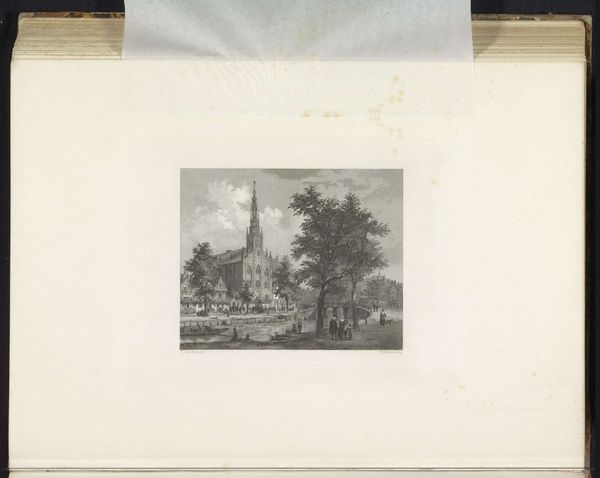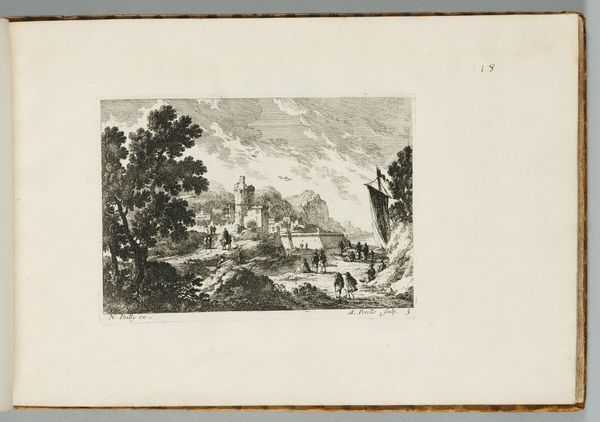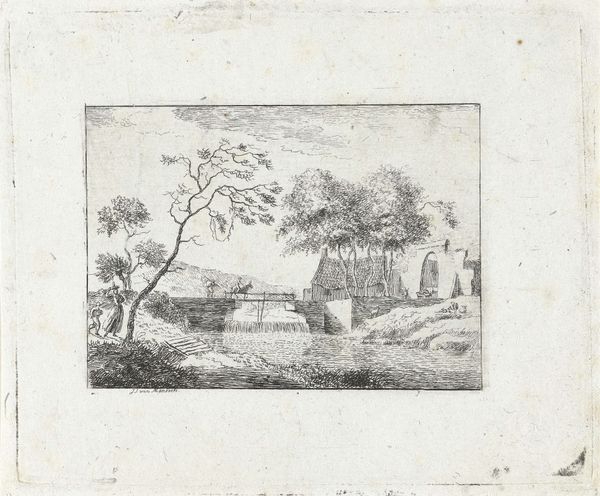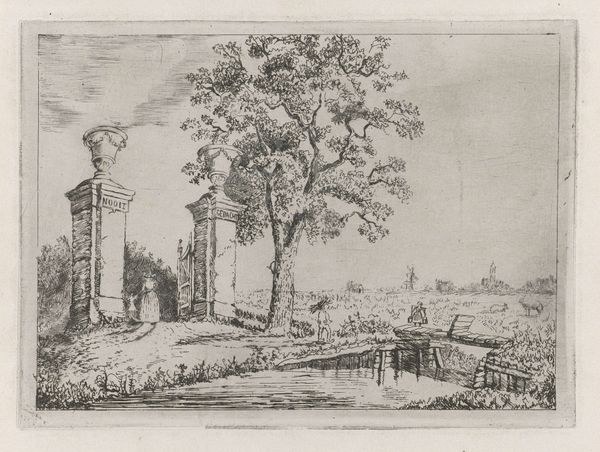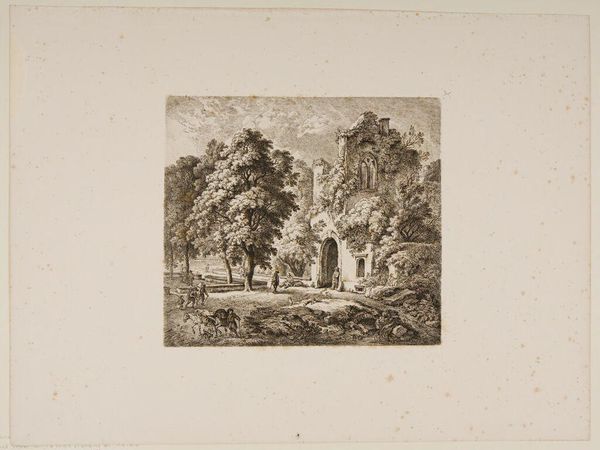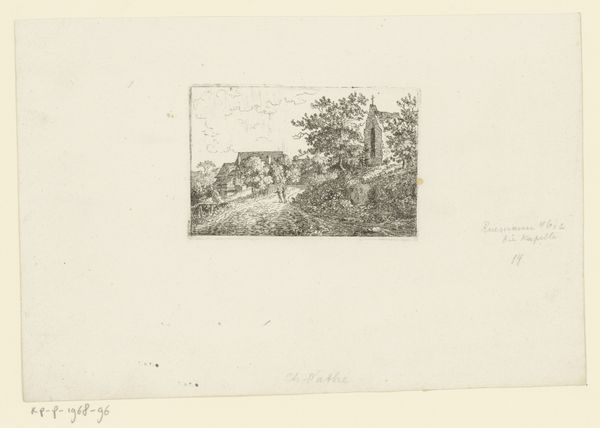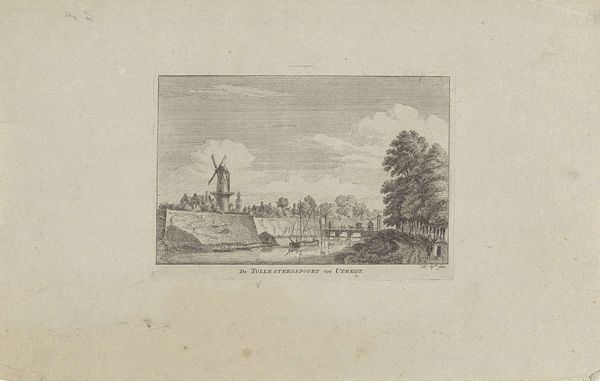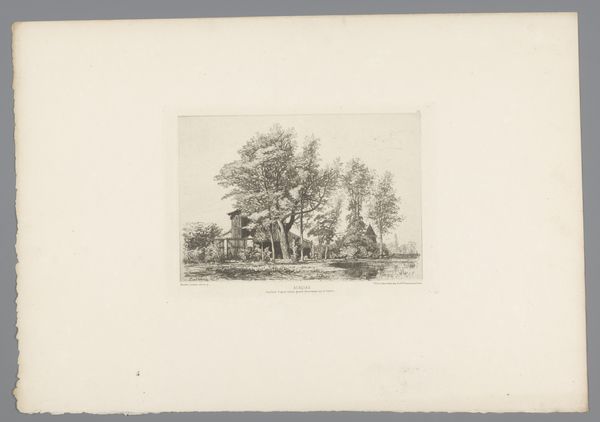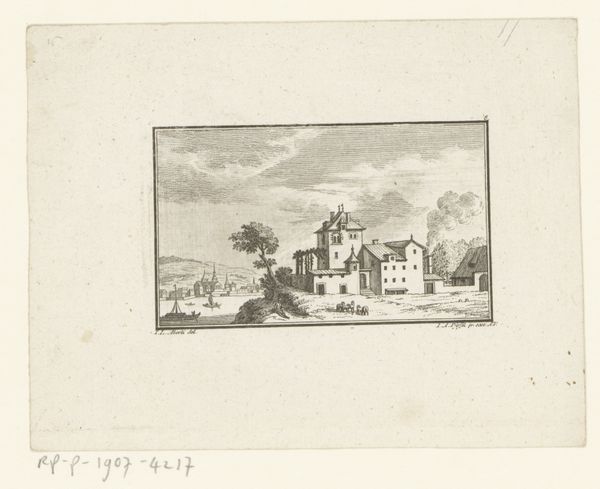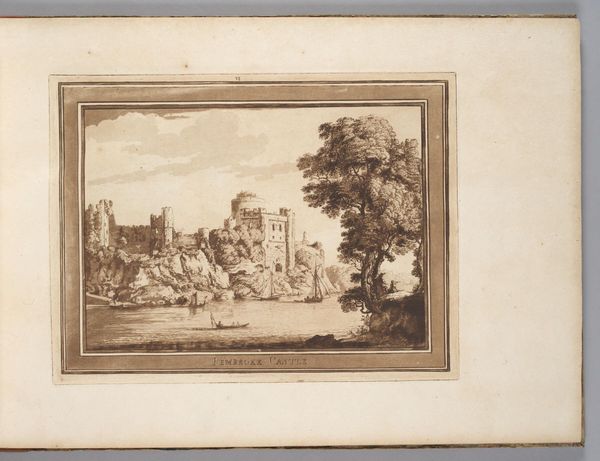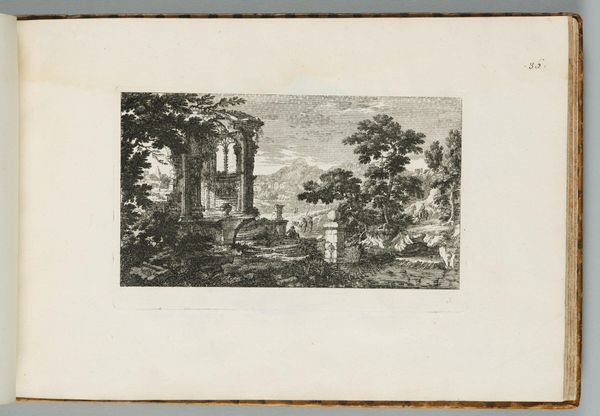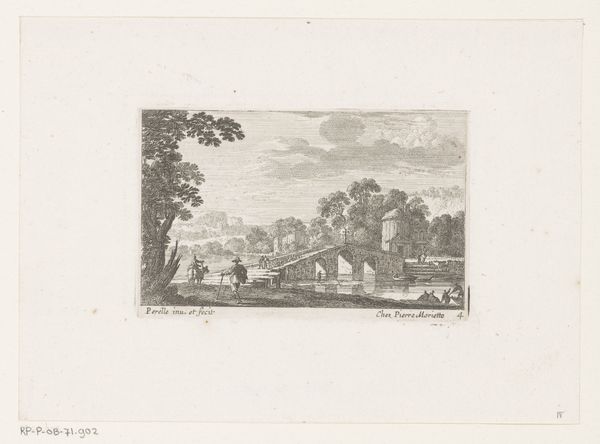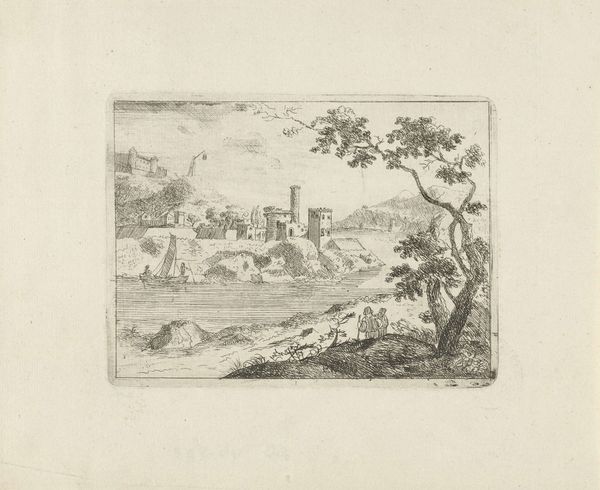
drawing, print, etching, paper
#
drawing
# print
#
etching
#
landscape
#
paper
#
romanticism
#
history-painting
Dimensions: 84 × 120 mm (image); 91 × 136 mm (plate); 200 × 285 mm (sheet)
Copyright: Public Domain
Curator: Look at this melancholic landscape. We are standing before Caspar David Friedrich’s “Scene of a Fire,” an etching from 1802. Editor: There is something ghostly about the monochromatic tonality. The figures seem trapped in this delicate net of cross-hatching; its ruins are more potent than the trees behind them. Curator: Friedrich often intertwined nature with ruin. Notice the etching technique itself, how it allows for such intricate detail, but also creates a certain… distance. It mirrors that Romantic era fascination with the sublime. Editor: That sublime feeling arises for me, yes, but my thoughts turn quickly to the work it takes to generate this sense. Consider the acid, the plate, the controlled degradation, the time spent on what can only be termed, labor. It’s far removed from, say, the swift application of paint! I suppose Friedrich valued, too, that time intensive labor and the ideas inherent in it. Curator: You know, it makes me think, isn’t the artist enacting the destructive process themself? Creating a "controlled ruin," as you said? In the end, all making is ruinous somehow. Every act transforms, destroying the former potential in favor of what now is. It's quite morbid, isn’t it? Editor: An intriguing angle on production. Still, it makes me wonder who Friedrich imagines will purchase, consume this print and others like it, images of peasants standing idle in front of crumbled manors. Is the appeal purely aesthetic or tied to notions of land ownership and perhaps a lament for a dying social order? I want to examine who controlled these resources and materials during Friedrich’s life and afterward! Curator: Ah, materialism as melancholia. The print definitely becomes heavier when weighed against those scales. It leaves me thinking— maybe Romanticism was already a little apocalyptic, not just in depicting decay, but by sensing it everywhere. Editor: Perhaps our conversation is less oppositional and more a circle. Even this little image, it contains endless processes—not just of production and social critique, but destruction, as well as renewal.
Comments
No comments
Be the first to comment and join the conversation on the ultimate creative platform.
